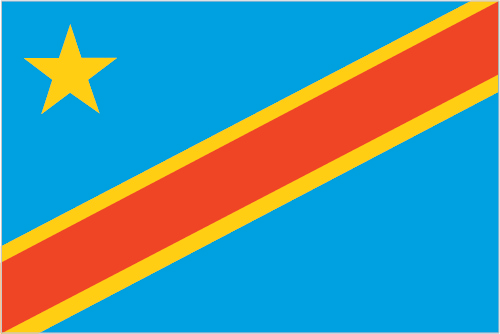
The economy of the Democratic Republic of the Congo - a nation endowed with vast natural resource wealth - is slowly recovering after decades of decline. Systemic corruption since independence in 1960, combined with country-wide instability and conflict that began in the mid-90s has dramatically reduced national output and government revenue and increased external debt. With the installation of a transitional government in 2003 after peace accords, economic conditions slowly began to improve as the transitional government reopened relations with international financial institutions and international donors, and President KABILA began implementing reforms. Progress has been slow to reach the interior of the country although clear changes are evident in Kinshasa and Lubumbashi. An uncertain legal framework, corruption, and a lack of transparency in government policy are long-term problems for the mining sector and for the economy as a whole. Much economic activity still occurs in the informal sector and is not reflected in GDP data. Renewed activity in the mining sector, the source of most export income, has boosted Kinshasa's fiscal position and GDP growth in recent years. The global recession cut economic growth in 2009 to less than half its 2008 level, but growth returned to around 7% per year in 2010-12. The DRC signed a Poverty Reduction and Growth Facility with the IMF in 2009 and received $12 billion in multilateral and bilateral debt relief in 2010, but the IMF at the end of 2012 suspended the last three payments under the loan facility - worth $240 million - because of concerns about the lack of transparency in mining contracts. In 2012, the DRC updated its business laws by adhering to OHADA, the Organization for the Harmonization of Business Law in Africa. The country marked its tenth consecutive year of positive economic expansion in 2012.
$29.39 billion (2013 est.)
country comparison to the world: 115
$27.66 billion (2012 est.)
$25.82 billion (2011 est.)
6.2% (2013 est.)
country comparison to the world: 36
7.2% (2012 est.)
6.9% (2011 est.)
$400 (2013 est.)
country comparison to the world: 228
$400 (2012 est.)
$400 (2011 est.)
agriculture: 44.3%
industry: 21.7%
services: 34% (2013 est.)
71% (2006 est.)
7.1% (2013 est.)
country comparison to the world: 190
9.5% (2012 est.)
35.18 million (2013 est.)
country comparison to the world: 18
agriculture: NA%
industry: NA%
services: NA%
NA%
mining (copper, cobalt, gold, diamonds, coltan, zinc, tin, tungsten), mineral processing, consumer products (textiles, plastics, footwear, cigarettes), metal products, processed foods and beverages, timber, cement, commercial ship repair
12% (2013 est.)
country comparison to the world: 7